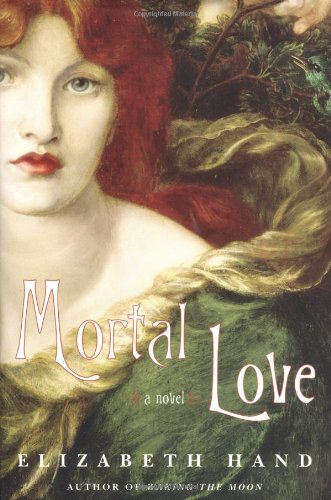Mortal Love
In Mortal Love, Elizabeth Hand has penned a narrative so fractured and complex, so full of absinthe and artists and literary allusions, that only the sharpest of readers will deduce the truth: Mortal Love is—at its heart—a fairy tale, complete with a happy ending.
A dozen point-of-view characters, divided between modern times and the late nineteenth century, form the threads of the narrative. A single female character serves as the link among them. This fiery individual tears a swathe through the artistic and literary worlds of both eras, inspiring painters and poets to produce great art, but leaving them physically and mentally scarred; in some cases, to the point of madness. The exact nature of this muse is a mystery that the author takes too long to reveal, and the final explanation can’t help but sound saccharine: She is the queen-of-the-fairies, who’d quarreled with her king and got lost in the mortal world. She’s a creature who lives a long life but leaves no mark, and envies our mortal ability to produce immortal art. All who she inspires are just “brushed by the feathers of her wingtips as she passes” because she will belong to no man but her lost king.
Though Ms. Hand links the plot threads with repeating imagery, and later reveals blood relationships among the characters, Mortal Love is still a novel of incredible difficulty—a novel that can only be appreciated upon a second or third reading.










